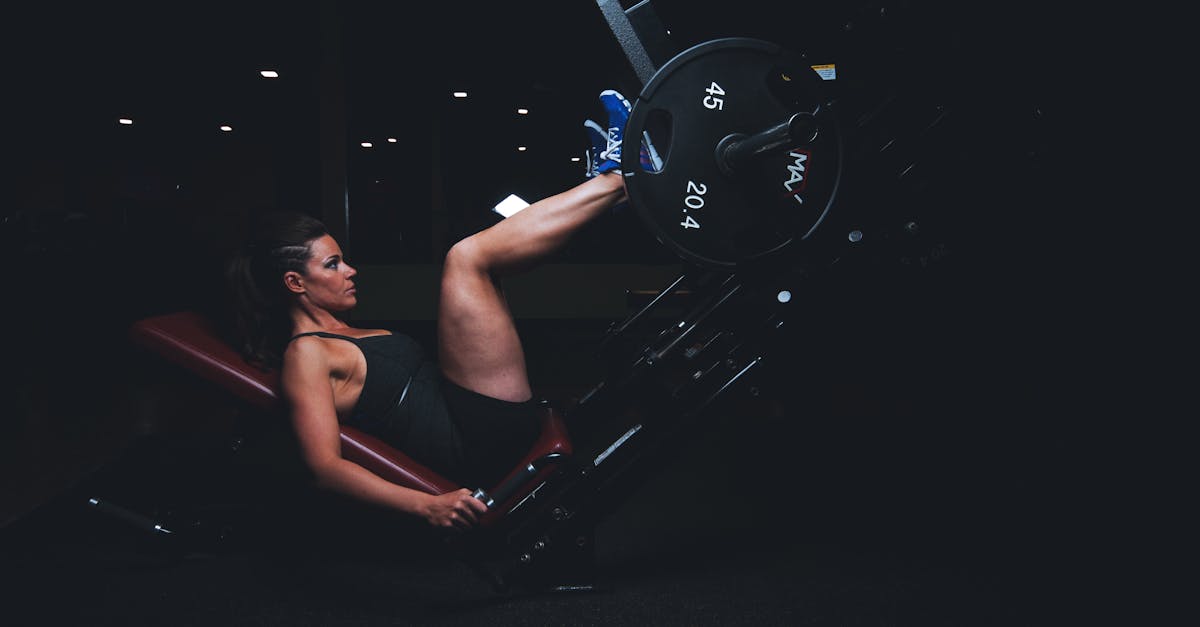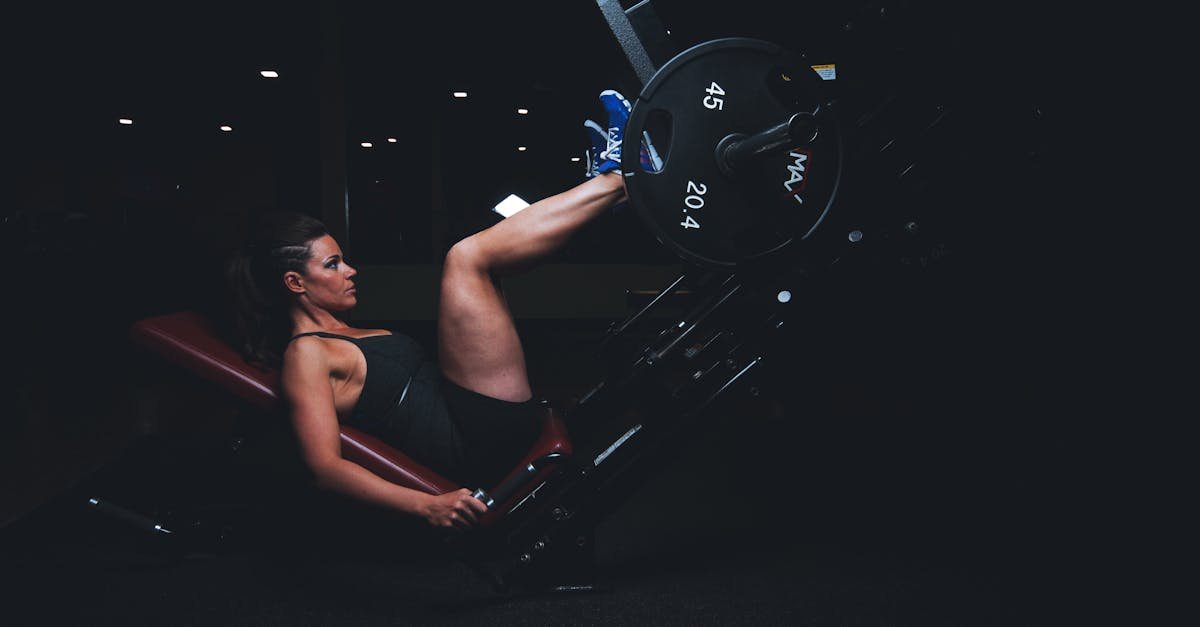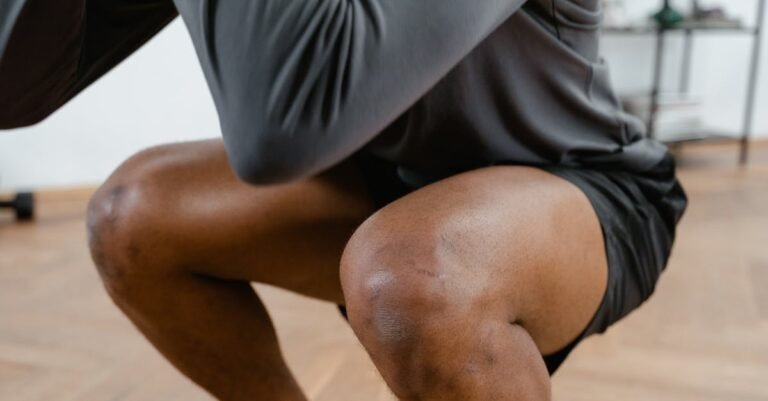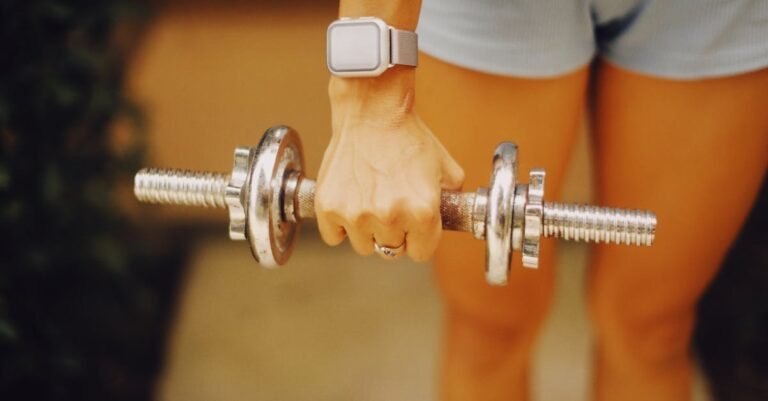Table of Contents
- Why Proper Form Isn’t Just Fitness Jargon: Unlocking Your True Potential
- What Exactly Is Proper Exercise Form?
- The Undeniable Benefits of Nailing Your Form
- The Sneaky Dangers of Ignoring Form
- How to Learn and Maintain Proper Form
- Conclusion: Form is the Foundation of Fitness Success
- Frequently Asked Questions (FAQs)
Why Proper Form Isn’t Just Fitness Jargon: Unlocking Your True Potential
Alright, let’s talk fitness. You hit the gym, you follow workout videos, you push yourself – that’s awesome! But have you ever stopped to think about how you’re performing each squat, each lift, each push up? We often hear trainers drone on about “proper form,” and maybe sometimes it feels like just another piece of fitness jargon they throw around. You might think, “As long as I’m sweating and feeling the burn, I’m doing it right… right?” Well, not exactly.
Think of proper exercise form as the instruction manual for your body during a workout. Just like you wouldn’t assemble complex furniture without glancing at the directions (okay, maybe some of you brave souls would, but often with wobbly results!), you shouldn’t put your body through demanding movements without understanding the correct way to execute them. Ignoring form isn’t just about potentially looking a bit awkward; it’s about fundamentally undermining your progress, wasting your precious time and energy, and, most importantly, setting yourself up for potential injury. Seriously, getting sidelined because you were sloppy with your technique is the ultimate fitness buzzkill. This isn’t about being perfect from day one, but it is about understanding why striving for good form is perhaps the most crucial element of any effective and sustainable fitness journey. It’s the secret sauce that turns mere movement into meaningful progress.
What Exactly Is Proper Exercise Form?
So, what does “proper form” actually mean? In simple terms, it’s performing an exercise in the way that is biomechanically optimal for your body. It means moving through the intended range of motion, engaging the target muscles effectively, and maintaining stability and control throughout the entire movement. It’s about ensuring the right joints are moving, the right muscles are firing, and your body is aligned correctly to handle the stress of the exercise safely.
It’s not just about mimicking what someone else looks like, although that can be a starting point. It’s about understanding the why behind the movement. Why keep your back straight during a deadlift? Why ensure your knees track over your toes during a squat? Why control the lowering phase (the eccentric part) of a bicep curl? The answers lie in protecting your joints, maximizing muscle activation, and ensuring the exercise actually achieves its intended purpose.
Beyond Just Looking Right: The Biomechanics Basics
Let’s get slightly nerdy for a second, but stick with me – it’s important! Biomechanics is the science of movement. When we talk about proper form, we’re essentially talking about applied biomechanics. Every exercise involves levers (your bones), fulcrums (your joints), and forces (muscle contractions and external weights). Proper form ensures these components work together harmoniously.
Think about a simple bicep curl. Poor form might involve swinging your back, using momentum to lift the weight. Biomechanically, you’re recruiting other muscle groups (like your lower back and shoulders) and reducing the load on the actual target muscle – the biceps. You’re essentially cheating the muscle you intend to work! Proper form, keeping your elbows tucked and isolating the bicep, ensures that muscle does the lion’s share of the work, leading to better stimulation and growth. It’s about understanding leverage, force distribution, and joint angles to make the exercise both safe and effective.
It’s Not One Size Fits All: Individual Variations
Now, here’s a crucial point: while the principles of good form are universal, the exact execution can look slightly different from person to person. Why? Because we all have unique bodies! Differences in limb length, joint structure, flexibility, injury history, and even muscle insertion points mean that *your* perfect squat might not look exactly like *my* perfect squat.
For example, someone with longer femurs might need a wider stance or lean forward more in a squat to maintain balance and depth compared to someone with shorter femurs. Someone with limited shoulder mobility might need to modify an overhead press. This doesn’t mean the *principles* of good form (like maintaining a neutral spine or controlling the movement) are thrown out the window. It just means you need to find the variation that allows you to adhere to those principles *within the context of your own body*. This is where listening to your body and potentially seeking expert guidance becomes invaluable. Don’t force your body into a position that feels inherently wrong just because it’s how someone else does it. Find *your* optimal form.
The Undeniable Benefits of Nailing Your Form
Focusing on form isn’t just about avoiding the bad stuff; it’s about unlocking a whole host of amazing benefits that will supercharge your fitness results and keep you in the game long term. Let’s break down why prioritizing technique is a total game changer.
Benefit #1: Preventing Injuries – Your Body’s Best Insurance
This is arguably the most critical benefit. Think of proper form as your body’s built in safety mechanism during exercise. When you move correctly, you distribute stress across the appropriate muscles and joints designed to handle it. When your form breaks down, that stress gets shunted to places it shouldn’t be – ligaments, tendons, joint capsules, or weaker supporting muscles.
Common Injuries from Poor Form
What kind of trouble are we talking about? Oh, the list is long and painful! Lower back pain from rounded back deadlifts or squats, shoulder impingement from flared elbows during bench presses or improper overhead pressing, knee pain (patellofemoral syndrome) from knees caving inward during squats or lunges, rotator cuff tears, herniated discs, tendonitis… the list goes on. These aren’t just minor aches; they can lead to chronic pain, require lengthy recovery periods, and completely derail your fitness goals (and impact your daily life!).
How Good Form Acts as a Shield
Proper form acts like a protective shield. By maintaining spinal alignment, you protect your discs. By ensuring proper joint tracking (like knees over toes), you reduce strain on ligaments. By engaging the correct stabilizing muscles, you support the primary movers and prevent compensatory movements that put joints at risk. It’s like driving a car with properly aligned wheels and functioning brakes versus careening down a hill with wobbly tires and hoping for the best. Which ride would you prefer for the long haul?
Benefit #2: Maximizing Muscle Engagement – Getting More Bang for Your Buck
You’re exercising to get results, right? Whether that’s building muscle, increasing strength, or improving tone, you want your efforts to count. Poor form is like throwing half your effort down the drain. When you use momentum, improper angles, or recruit unintended muscles, you’re taking the focus *away* from the muscles you actually want to work.
Targeting the Right Muscles
Proper form ensures that the target muscle group is doing the primary work. Remember the bicep curl example? By keeping strict form, you force the biceps to contract maximally throughout the range of motion. If you’re doing a lat pulldown, proper form (depressing the scapula, pulling with the elbows) ensures your back muscles are engaged, rather than just using your biceps and momentum. You get better isolation, better stimulation, and ultimately, better results for the specific muscles you’re trying to train.
Mind Muscle Connection Boost
Focusing on form inherently improves your mind muscle connection. This is the conscious ability to feel the target muscle working during an exercise. When you slow down, control the movement, and think about the mechanics, you become more aware of the sensations in your body. This enhanced connection allows you to actively contract the muscle harder and ensure it’s receiving the optimal stimulus for growth and adaptation. It transforms exercise from just going through the motions to a focused, intentional practice.
Benefit #3: Enhancing Performance and Efficiency – Working Smarter, Not Harder
Good form makes your movements more efficient. Think about it: when you move biomechanically correctly, you minimize wasted energy. Every part of the movement serves a purpose. Swinging, jerking, or using compensatory patterns are inefficient ways to move weight; they leak energy and fatigue you faster without necessarily providing a better training stimulus.
By mastering form, you learn to generate force effectively and move loads more smoothly. This translates directly to better performance. You’ll likely find you can lift slightly heavier weights with good form than you could with sloppy form (or at least, lift the same weight for more reps with better control), because the effort is directed appropriately. You’ll also conserve energy, allowing you to complete more quality work within your session or push harder on subsequent exercises. It’s the definition of working smarter.
Benefit #4: Building a Stronger Foundation for Progress
Consider proper form the concrete foundation upon which you build your fitness house. Without a solid foundation, adding more weight, intensity, or volume (the walls, roof, and furniture of your fitness house) is precarious. Eventually, the structure will falter.
Mastering the fundamentals with good form ensures that as you progress and add more challenging elements to your training, your body is prepared to handle the increased demand safely and effectively. You build better movement patterns, stronger stabilizing muscles, and improved neuromuscular control. This strong base allows you to continually progress over the long term, adding weight or complexity without constantly hitting injury roadblocks or technique limitations. It’s the key to sustainable, lifelong fitness improvement.
The Sneaky Dangers of Ignoring Form
Okay, we’ve sung the praises of good form. But what happens when you consistently ignore it? It’s not always a dramatic, sudden injury (though that can happen). Often, the consequences are more insidious, creeping up on you until you’re wondering why you’re hurting, stalled, or just plain frustrated.
The Slippery Slope to Chronic Pain
As mentioned earlier, poor form places undue stress on joints, ligaments, and tendons. Doing this occasionally might not cause immediate issues, but repeating faulty movement patterns workout after workout, week after week, is like water dripping on a stone. Eventually, it wears things down. This cumulative microtrauma can lead to chronic inflammation (like tendonitis or bursitis), degenerative changes in joints (like osteoarthritis), and persistent pain, particularly in vulnerable areas like the lower back, shoulders, and knees. What starts as a minor ache can evolve into a nagging, chronic condition that significantly impacts your quality of life, both in and out of the gym.
Hitting Plateaus Sooner Than You Should
Are you stuck lifting the same weight? Finding it impossible to increase your reps? Poor form could be the culprit. When you rely on momentum or compensation rather than targeted muscle strength, you create a false ceiling for your progress. You can only cheat the movement so much before you either get injured or simply can’t move any more weight using those faulty mechanics. Your target muscles aren’t getting the proper stimulus to adapt and grow stronger, leading to frustrating plateaus. Fixing your form often unlocks new levels of strength and progress because you start truly challenging the muscles you intend to work.
Wasted Effort and Frustration
Think about all the time and energy you dedicate to your workouts. It’s frustrating to realize that a significant portion of that effort might be wasted due to poor technique. You’re putting in the work, sweating buckets, feeling fatigued, but the results aren’t matching the effort. Why? Because the stimulus isn’t being directed effectively. You might be fatiguing supporting muscles or simply moving inefficiently, rather than challenging the primary movers in a way that forces adaptation. This can lead to disillusionment and make you question if working out is even worth it. Spoiler alert: it is, but only if you do it right!
How to Learn and Maintain Proper Form
Convinced that form is king? Excellent! But how do you actually go about learning and ensuring you’re using good technique? It’s an ongoing process, not a one time fix. Here are some practical strategies:
Start Light and Focus on Movement Quality
Ego lifting – hoisting weights that are too heavy with terrible form – is the enemy of progress and safety. When learning a new exercise or focusing on improving your form, always start with lighter weights, or even just your bodyweight. This allows you to focus entirely on the *quality* of the movement without struggling under a heavy load. Concentrate on the muscle contractions, the path of movement, and maintaining control throughout the entire range of motion. Nail the pattern first, then gradually add weight only when you can maintain that quality.
Use Mirrors and Record Yourself
Mirrors in the gym aren’t just for checking your outfit! Use them strategically to get visual feedback on your form during exercises. Are your knees tracking correctly? Is your back straight? Are your elbows in the right position? However, don’t rely *solely* on mirrors, as constantly looking sideways can sometimes compromise form itself (e.g., neck alignment). An even better tool? Your smartphone! Record yourself performing exercises from different angles (side, front, back). Watching the playback provides objective feedback that you might miss in real time or in the mirror. You might be surprised by what you see!
Seek Professional Guidance (Trainers & Coaches)
Investing in a few sessions with a qualified personal trainer or coach can be incredibly valuable, especially when you’re starting out or tackling complex lifts. A good coach has a trained eye to spot subtle errors in your form that you might miss. they can provide personalized cues based on your individual biomechanics, teach you proper setup and execution, and help you modify exercises if needed. Think of it as an investment in your long term health and fitness success.
Listen to Your Body – Pain is a Signal!
This is crucial. Your body provides constant feedback. Learn to differentiate between the normal discomfort of muscle fatigue (“the burn”) and actual pain. Sharp, stabbing, pinching, or joint pain is NOT normal and is often a sign that something is wrong with your form or the exercise isn’t suitable for you at that moment. Don’t push through sharp pain! Stop the exercise, assess what might be wrong, and if necessary, regress or choose a different movement. Ignoring pain signals is a fast track to injury.
Conclusion: Form is the Foundation of Fitness Success
So, there you have it. Proper exercise form isn’t just a suggestion; it’s the bedrock of safe, effective, and sustainable training. It’s the difference between making real, lasting progress and spinning your wheels while risking injury. By prioritizing technique over sheer weight, focusing on quality movement, and being mindful of how your body feels, you unlock the door to numerous benefits: enhanced muscle activation, improved performance, greater efficiency, and most importantly, a reduced risk of getting sidelined. It requires patience, mindfulness, and sometimes, checking your ego at the door. But trust me, investing the time and effort to learn and maintain good form is the smartest thing you can do for your fitness journey. It ensures every drop of sweat counts towards building a stronger, healthier, more resilient you. Now go forth and move well!
Frequently Asked Questions (FAQs)
1. Is it okay if my form isn’t perfect on every single rep?
Striving for perfect form on every rep is the goal, but some minor form degradation, especially on the last challenging rep or two of a set, is often acceptable, provided it’s not compromising safety (e.g., a slightly slower rep speed is okay, but rounding your lower back significantly on a deadlift is not). The key is awareness. If your form consistently breaks down early in the set, the weight is likely too heavy. Aim for quality over quantity, and stop the set when you can no longer maintain reasonably good technique.
2. How do I know if I’m feeling muscle fatigue or actual pain?
This takes practice and body awareness. Muscle fatigue typically feels like a burning sensation, tightness, or general tiredness within the muscle being worked. It usually builds gradually during a set and dissipates relatively quickly afterward. Pain, on the other hand, is often sharper, more localized (sometimes in a joint rather than the belly of the muscle), pinching, stabbing, or aching. It might occur suddenly or persist long after the exercise stops. If a sensation makes you wince or feel like something is “wrong” in a joint, err on the side of caution – that’s likely pain.
3. Can poor form on one exercise affect other movements or cause pain elsewhere?
Absolutely! The body works as an interconnected system (a kinetic chain). Poor form in one area can lead to compensations elsewhere. For example, poor core stability during squats might lead to excessive lower back strain. Weak glutes causing knee valgus (knees collapsing inward) during running or jumping can lead to knee or even hip or ankle pain. Ignoring form on seemingly isolated exercises can create imbalances and dysfunctional movement patterns that manifest as pain or injury in completely different activities.
4. Does proper form change depending on the goal (e.g., strength vs. hypertrophy)?
The fundamental principles of safe and effective biomechanics remain the same regardless of the goal. You always want to protect your joints and target the intended muscles. However, there might be subtle variations. For pure strength, the focus might be on moving the maximum weight through the required range of motion efficiently, sometimes involving slightly different leverages. For hypertrophy (muscle growth), the emphasis is often on maximizing tension on the target muscle, which might involve slower tempos, controlled eccentrics, and ensuring a strong mind muscle connection throughout a slightly stricter range of motion. Safety, however, is paramount for both.
5. If I have a previous injury, how should I approach form?
If you have a previous injury, consulting with a physical therapist or a qualified coach experienced in post rehabilitation training is highly recommended before starting or modifying an exercise program. They can assess your movement, identify limitations or compensations resulting from the injury, and help you modify exercises or choose alternatives. Proper form becomes even *more* critical to avoid re injury. You may need to use a modified range of motion, focus heavily on stability, or avoid certain movements altogether initially. Don’t guess – get professional guidance to ensure you’re training safely and effectively around your injury history.










